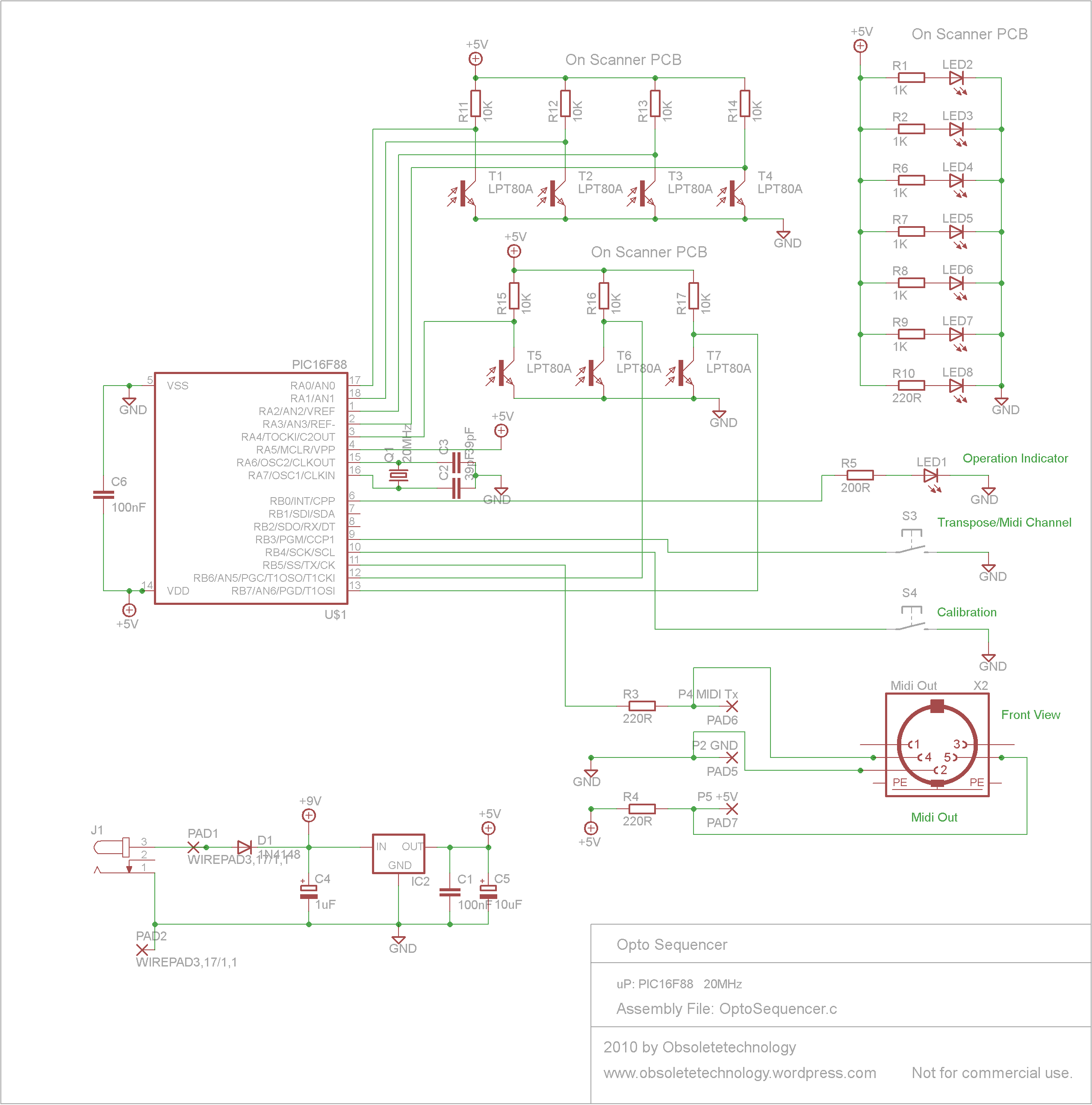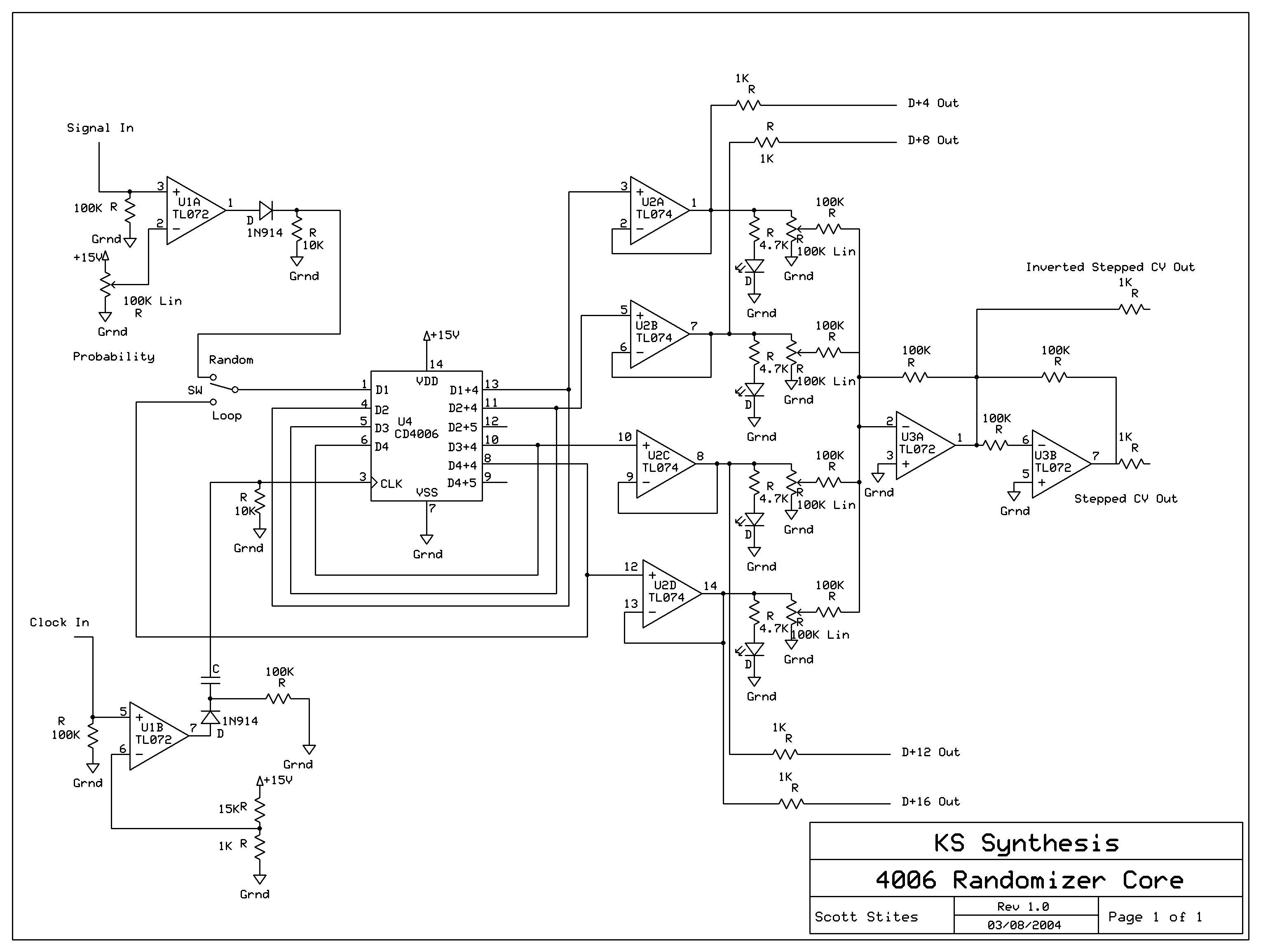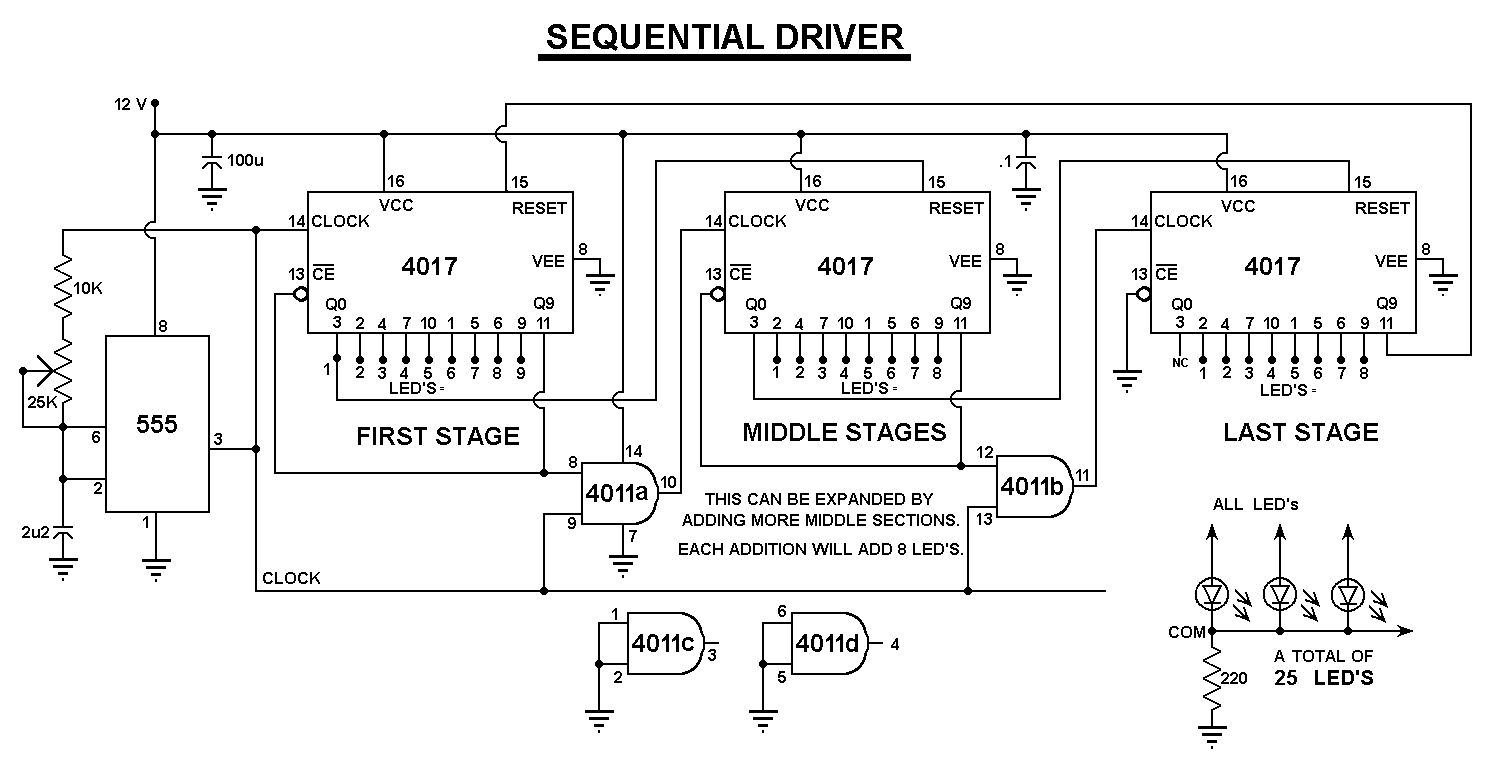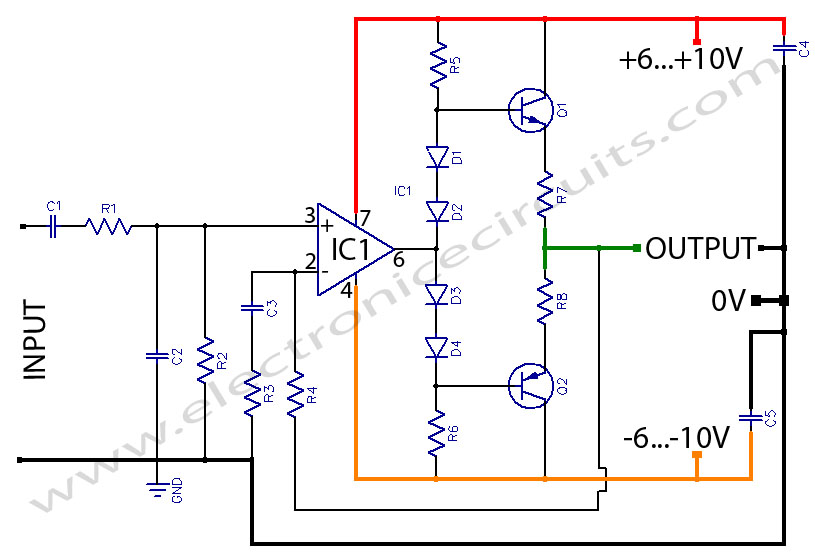
12 stage neon sequencer ne 2 ne 51
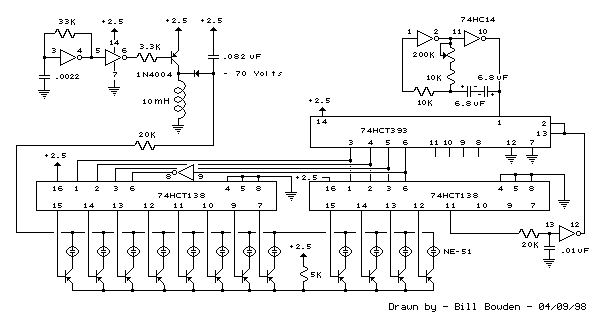
This circuit resembles an LED clock, utilizing 12 neon indicator lamps in place of LEDs. It operates on two high-capacity nickel-cadmium (Ni-Cad) cells providing 2.5 volts, allowing sustained operation for several weeks. The high voltage (70 volts) required for the neon lamps is generated by a compact switching power supply, which employs a 74HC14 Schmitt trigger square wave oscillator, a high-voltage switching transistor, and a 10 mH high-Q inductor.
This circuit design features a unique approach to displaying time using neon lamps, which are known for their bright illumination and distinctive glow. The use of two Ni-Cad cells ensures that the circuit remains powered for an extended period, making it suitable for applications where frequent battery changes are impractical. The 74HC14 Schmitt trigger serves as the oscillator, generating a square wave signal that is essential for driving the switching transistor.
The high-voltage switching transistor is crucial for stepping up the voltage from the low-level input provided by the Ni-Cad cells. This transistor operates in a switching mode, allowing it to efficiently control the flow of current to the inductor. The inductor, rated at 10 mH and characterized by its high quality (high-Q), plays a vital role in the boost converter circuit by storing energy and releasing it at a higher voltage.
When the circuit is powered, the oscillator generates a square wave that alternates the state of the switching transistor. This rapid switching action causes the inductor to charge and discharge, ultimately generating the required 70 volts to illuminate the neon lamps. The design ensures that the neon indicators light up sequentially or in a pattern that can represent time, similar to a traditional clock.
Overall, this circuit combines efficient power management with innovative display technology, making it a practical solution for low-power, long-lasting timekeeping applications. The careful selection of components and their configuration is essential for achieving the desired performance and reliability in the operation of the neon lamp clock.This circuit is similar to the LED clock using 12 neon indicator lamps instead of LEDs. It operates from 2 high capacity ni-cad cells (2.5 volts) which keep it going for a couple weeks. High voltage (70 volts) for the neon lamps is obtained from a small switching power supply using a 74HC14 Schmitt trigger squarewave oscillator, high voltage switching transistor, and 10 mH high Q inductor.. 🔗 External reference
This circuit design features a unique approach to displaying time using neon lamps, which are known for their bright illumination and distinctive glow. The use of two Ni-Cad cells ensures that the circuit remains powered for an extended period, making it suitable for applications where frequent battery changes are impractical. The 74HC14 Schmitt trigger serves as the oscillator, generating a square wave signal that is essential for driving the switching transistor.
The high-voltage switching transistor is crucial for stepping up the voltage from the low-level input provided by the Ni-Cad cells. This transistor operates in a switching mode, allowing it to efficiently control the flow of current to the inductor. The inductor, rated at 10 mH and characterized by its high quality (high-Q), plays a vital role in the boost converter circuit by storing energy and releasing it at a higher voltage.
When the circuit is powered, the oscillator generates a square wave that alternates the state of the switching transistor. This rapid switching action causes the inductor to charge and discharge, ultimately generating the required 70 volts to illuminate the neon lamps. The design ensures that the neon indicators light up sequentially or in a pattern that can represent time, similar to a traditional clock.
Overall, this circuit combines efficient power management with innovative display technology, making it a practical solution for low-power, long-lasting timekeeping applications. The careful selection of components and their configuration is essential for achieving the desired performance and reliability in the operation of the neon lamp clock.This circuit is similar to the LED clock using 12 neon indicator lamps instead of LEDs. It operates from 2 high capacity ni-cad cells (2.5 volts) which keep it going for a couple weeks. High voltage (70 volts) for the neon lamps is obtained from a small switching power supply using a 74HC14 Schmitt trigger squarewave oscillator, high voltage switching transistor, and 10 mH high Q inductor.. 🔗 External reference
